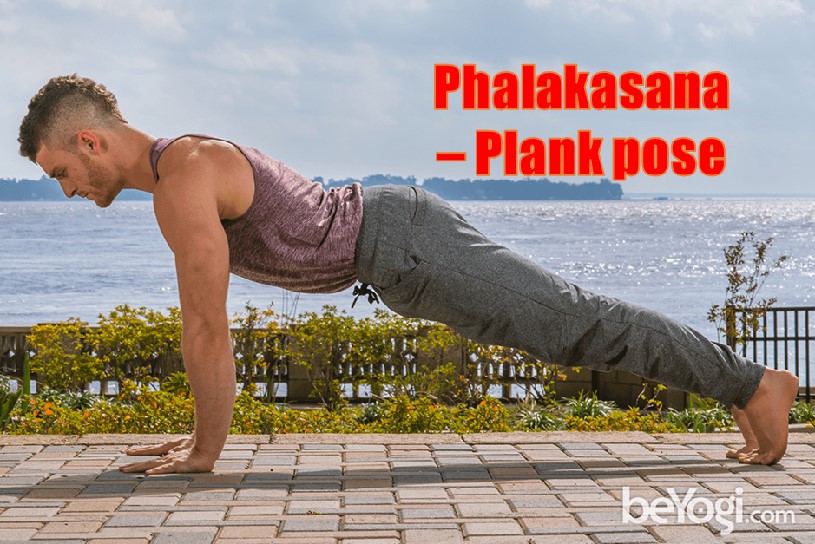
Plank pose – Phalakasana
(Plank pose may look very easy pose to do and may not appealing. But, it is not that easy to hold plank pose as we think. It is one of the best exercises for core conditioning in addition it also works glutes and hamstrings, supports proper posture, and improves balance.
While getting into the proper form is straightforward, holding the position takes strength and endurance in your abs, back, and core. In yoga, plank pose is known as Phalakasana that means to bear fruit.
Yes, if you practice plank pose your body will shape up the way you want it to be. Toned belly, relief from back pain, shoulder strength and toning, flexibility and stretching, strong legs, improving your confidence to take you to great height in life – all these are achievable by doing this pose regularly, everyday! – Healthy life)
Sanskrit: Phalakasana (fal-ack-AHS-anna)
phala = to bear fruit, ripen
.
BENEFITS:
- Strengthens the arms, wrists, and shoulders
- Prepares the body for more advanced poses, such as arm balances
- Strengthens and tones the abdomen and legs
- Improves endurance
- Builds spinal strength and improves posture
CONTRAINDICATIONS
- Carpal tunnel syndrome
- Shoulder or arm injuries
- Low back pain (keep knees on the ground)
HOW TO
1. Start in Downward Facing Dog.
2. On an inhale, glide your body forward until your shoulders are directly above your hands and your arms are perpendicular to the floor. If your shoulders are not aligned over your wrists, you may need to separate your hands and feet a bit more.
3. Press your hands firmly into the floor, fingers spread apart. Engage the outer arms by pressing them inward. Firm your shoulder blades into the back and spread your collarbones away from the sternum.
4. Draw the navel in and up. Press the top of your thighs toward the sky, and lengthen your tailbone toward the heels.
5. Set your gaze down on the floor or slightly in front of you, softening the neck and jaw.
6. If practicing a vinyasa flow, only hold this pose for the duration of your inhale; then exhale and lower down to either Chaturanga or Knees-Chest-Chin pose. To build strength, hold Plank pose for five breaths.
MODIFY OR REPLACE
Alternatives:
Bharmanasana (Tabletop pose)
- Four-Limbed Staff Pose (Chaturanga Dandasana)
- Modifications:
- Lower your knees to the ground.
SEQUENCING TIPS
Before:
- Adho Mukha Svanasana (Downward-Facing Dog)
- Vasisthasana (Side Plank pose)
After:
- Chaturanga Dandasana (Four-Limbed Staff pose)
- Urdhva Mukha Svanasana (Upward-Facing Dog)
TEACHING CUES
- Ground down through all four corners of your hands.
- Reach through the heels to lengthen the spine, activating the leg muscles.
- Keep your neck long and soften the throat.
- Gaze straight down or slightly in front of you on the floor.
VARIATIONS
- Raise one leg as you lower down into Chaturanga for a lifted-leg vinyasa.
WATCH OUT FOR
- Collapsing the hips down
- Collapsing through the upper back
- Dropping the chin toward the chest
- Locking the elbows
.
NOTE: This article and image of plank pose is published here with permission from https://beyogi.com
Author: HealthyLife | Posted on: June 27, 2017
« Ghee(Clarified Butter) And Its Importance Little Thunderbolt Pose »






















Write a comment